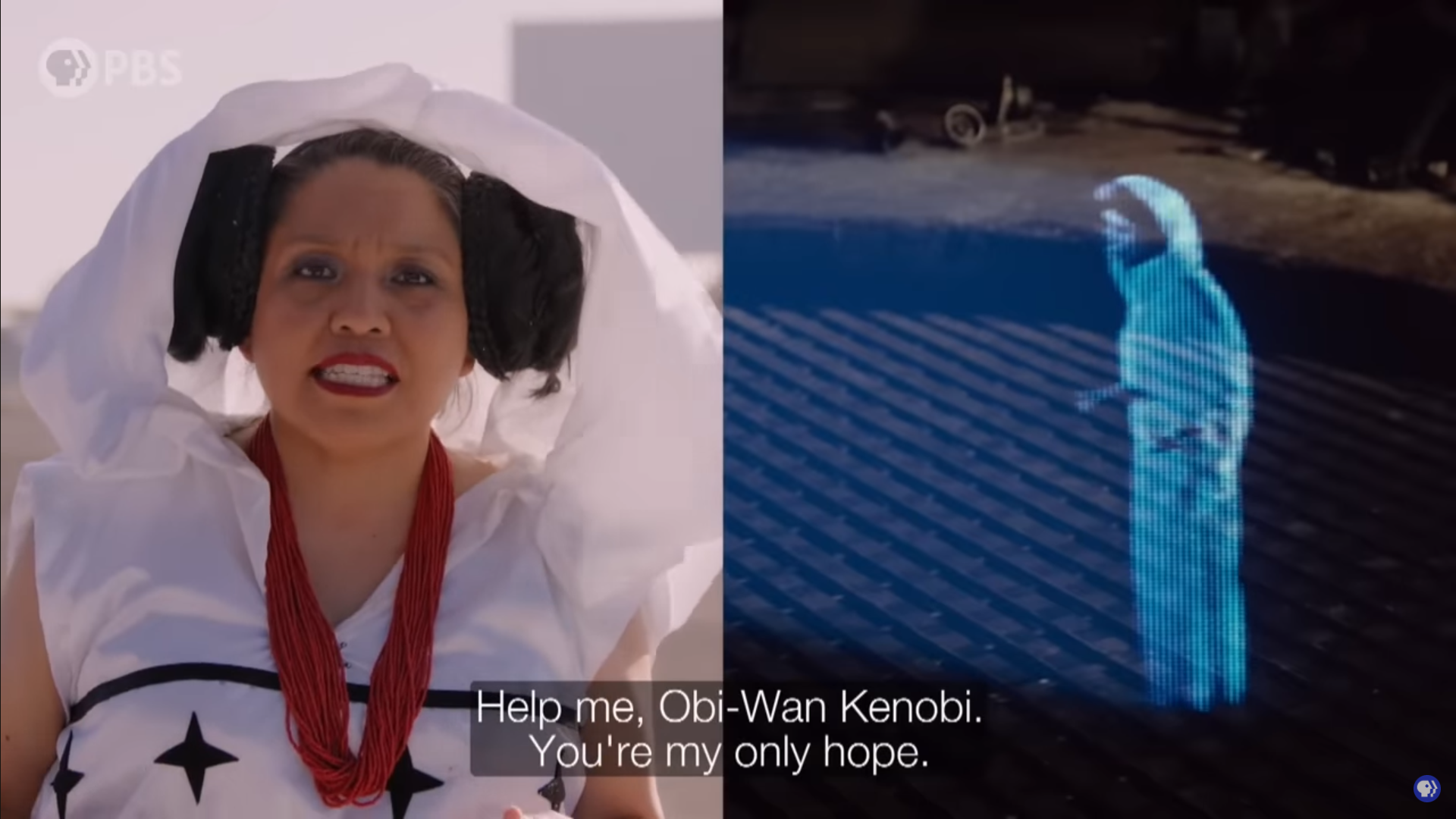Culture
Watchlist: ‘Why “Star Wars” was dubbed into the Navajo Language’

By Kamiah Koch
Social media/digital journalist
Native Americans dressed as C-3PO, Princess Leia and stormtroopers settle into their cars as the sun is setting on the Navajo Reservation.
“Ladies and gentleman who are listening in your cars this evening here at the drive-in theater, the Navajo language is on a comeback,” Navajo Nation President Jonathan Nez said over the radio, as he introduced the feature film of the evening: The Navajo-dubbed version of “Star Wars.”
PBS published a video in November sharing the innovative ways the Tribe is preserving its language.
“It’s a great deal for me because my grandparents can see this movie,” Geri Hongeva, wearing a C-3PO shirt, said. “There are a lot of Elders in our community where Navajo is the only language known.”
To one Indigenous “Star Wars” fan, the movie mirrors some aspects of Native culture. Having it in a Native language amplifies that.
“When I heard that folks were going to do Episode IV in Navajo language, it was a dream that came true,” Navajo Tribal member James Bilagody, dressed up at the Grand Moff Tarkin character, said. “The teachings, like Yoda, would say things that I heard when I was a little boy. The connection was strong.”
The movie was shown on a giant drive-in movie screen on May 4, 2023, also known to “Star Wars” fans as, “May the fourth be with you.” The date has become a pop culture holiday, using a play on words celebrating the Star Wars phrase, “May the force be with you.”
The PBS videos shows Tribal members enjoying the film dubbed in Navajo, with subtitles in English for translation.
Navajo Tribal member and Navajo Nation Museum employee Manny Wheeler was the “Jedi-mind” behind the Navajo version of “Star Wars.”
According to the PBS video, Wheeler auditioned hundreds of Navajo to voice act the scenes in Navajo. Some of the voice actors came to the screening in character.
“The force and the universe is all interconnected,” Wheeler said. “When you put that in the Navajo language, especially for an Elder to hear that and be thinking, ‘Yeah, of course.’ It’s not just a movie, that’s stuff we really believe.”
Although dubbing this movie in Navajo made it more accessible for Elders, it also demonstrates most of the remaining Navajo speakers are older. Like many Tribes, they fear the Navajo language could be lost if younger generations don’t learn to speak it.
According to the video, before 1492 there were more than 300 Native languages spoken in North America. Today there are roughly 170. If nothing is done, by 2050 there will be 20 languages left.
If you would like to learn the language of the Grand Ronde region, you can find more on the Chinuk Wawa programs at https://www.grandronde.org/services/education/chinuk-wawa-education/.
You can watch this PBS video at https://www.youtube.com/watch?v=zcYn-_gK_98.
